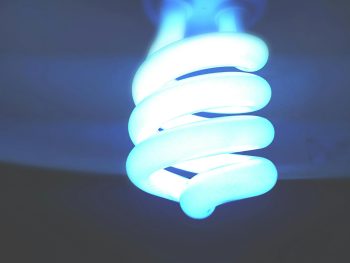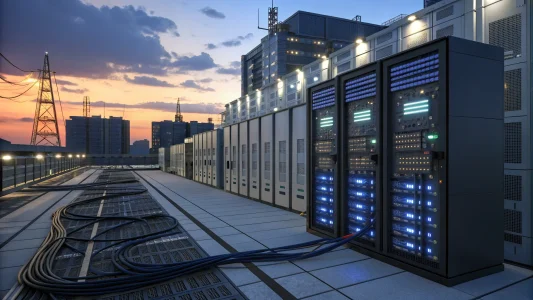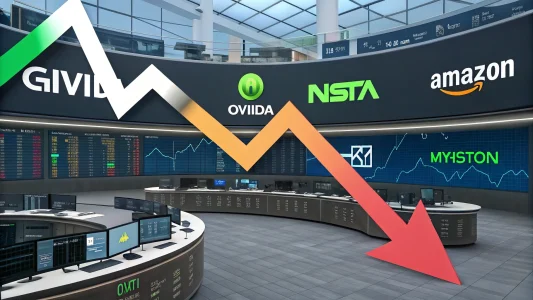Millions of Americans, especially retirees on fixed incomes, have become increasingly stressed out by their electric bills. Previously, there was a slight uptick every year, but now it’s a steady surge.
Within the last year alone, electricity rates have risen nearly double the rate of inflation and are now over 30% higher than they were in 2020. According to experts, those rates will continue to increase until at least 2026.
If you are trying to budget for your retirement, that can be a problem. After all, compared to younger households, retirees on fixed incomes spent 12.7% of their total budgets on energy in 2024—as such, even a sudden $50–$100 spike can create financial woes.
The good news? While you cannot control the global energy markets or the weather, you can control how efficiently your home uses electricity.
Using this article, you’ll discover the reasons behind your skyrocketing energy bill. You’ll also learn how you can regain control and save more for retirement.
Table of Contents
TogglePart 1: Why Your Power Bill Keeps Rising
Understanding the problem is the first step to fighting it. Today’s surge in electricity costs is the result of a perfect storm of several factors.
The triple threat: AI, EVs, and climate.
AI and datacenters.
Although artificial intelligence might seem like a distant, high-tech trend, its impact is close to home. To run AI and cloud computing, massive data centers must operate nonstop, consuming enormous amounts of energy. In the race to supply them, utilities raise their rates to keep up with demand.
Electrification and EVs.
As the country shifts toward electric vehicles and electric home systems such as heat pumps and induction stoves, the strain on the grid grows. Although these technologies are cleaner and often cheaper to operate, they add a substantial load to local circuits.
Climate change and cooling.
In the past decade, the temperature has reached record highs. Summers with longer and hotter days require more air conditioning, which is often the biggest energy consumer in a home. To meet peak summer demand, utilities need to invest additional capacity, and that cost is passed straight on to customers.
Aging infrastructure and resilience upgrades.
Many parts of the American power grid were built decades ago. In recent years, utilities have invested billions of dollars in upgrading transmission lines, replacing aging transformers, and hardening their systems to withstand extreme weather, including wildfires, hurricanes, and deep freezes.
It’s essential to upgrade those systems for reliability, but it’s also expensive. By raising rates, utilities recoup their investment.
If you see “delivery fees” or “infrastructure adjustments” on your bill, that’s what you’re paying for.
Fuel volatility and policy shifts.
While renewable energy continues to grow, about 40% of U.S. electricity is still generated by natural gas. Despite this, it remains highly sensitive to global events, disruptions in the supply chain, and extreme weather conditions.
In almost every case, wholesale electricity costs follow changes in natural gas prices. As a result, rates are raised more steeply in some regions due to slower renewable energy expansion or reduced incentives for energy use.
Part 2: A Three-Tier Plan to Cut Energy Costs
It’s now your turn to take control of the situation. You should think of your savings strategy as a three-tiered system of daily habits, long-term upgrades, and future-proofing.
Tier 1: Low-to-no-cost, high-impact habits.
In your next bill, these quick wins can make an immediate difference at no cost.
- Adjust your thermostat. Temperature control is the most cost-effective way to save money. In summer, set the thermostat to 78°F, and in winter, set it to 68°F. Around 10% can be saved with every degree adjustment in your heating or cooling system.
- Unplug “phantom loads.” When turned off, many devices continue to consume power, such as TVs, chargers, and coffee makers. Unplug them, or use smart power strips that automatically cut off power to idle devices. By doing this, you can save between 5 and 10% on your total energy use.
- Time your appliances. When your utility uses Time-of-Use (TOU) pricing, electricity is cheapest off-peak (usually overnight). For noticeable savings, run your dishwasher, laundry, and other big appliances after 8 PM or before 9 AM.
- Use natural light and shade wisely. To keep your home cool in the summer, close the blinds on sun-facing windows. To help your space stay warm during the winter, open the windows during the day.
- Running ceiling fans. The purpose of fans is to cool people, not rooms. Using them lets you circulate air and raise your thermostat without sacrificing comfort.
Tier 2: Mid-Range Upgrades with Fast Payback
Within a year or two, these small investments pay for themselves. Best of all? You can DIY these home improvements.
- Seal air leaks. With caulk and weatherstripping, you can seal gaps around windows, doors, and outlets for $10–$50. As a result, heating and cooling costs can be reduced by 10–20%.
- Switch to LEDs. An LED light bulb saves 75% to 90% on electricity and lasts 25 times longer than a traditional incandescent bulb. Despite LEDs having a higher initial price, energy savings and lower replacement costs quickly return the investment.
- Install a smart thermostat. You can reduce energy use without lifting a finger with a programmable or smart thermostat ($50–$250). In most cases, they pay for themselves within one to two years.
- Insulate your water heater. If your water heater is in an unheated space, a $30 water heater blanket can reduce standby heat loss by up to 45%.
- Replace the air filters regularly. When your HVAC system’s filters are dirty, it has to work harder. You can lower your energy consumption and repair bills by changing them every few months.
Tier 3: Long-Term Investments with Major Savings
While these upgrades require more money upfront, they can dramatically reduce your energy bills for decades to come. Now that federal tax credits and rebates are available, they’re more affordable than ever.
- Upgrade insulation. Insulating attics, walls, and crawl spaces prevents heat loss in winter and gain in summer.
- Energy Star windows and doors. Modern, energy-efficient windows and doors reduce heat transfer by up to 50%. For windows, the tax credit is up to $600, and for doors, it’s up to $500.
- Install a heat pump. By replacing your furnace and air conditioner with a high-efficiency heat pump, you can save big year-round. In addition to federal credits, it qualifies for state and utility rebates worth up to $2,000 each.
- Consider solar panels. In the long run, solar panels are the best hedge against rising energy costs. A 30% Residential Clean Energy Credit will be given on installation costs, with no limit on how many credits you can receive.
Bonus tip: Consider scheduling an energy audit before you make major upgrades — it’s often free or low-cost through your utility company. Auditors use tools such as infrared cameras and blower doors to identify your home’s energy leaks, so you can invest in the areas that matter most.
Part 3: Don’t Overlook What Your Utility Company Offers
Although it might feel like your utility is causing problems, they’re also part of the solution.
Check for rebates and assistance programs.
Utilities usually offer rebates on Energy Star products such as LED lighting, thermostats, and efficient appliances.
You may be eligible for free upgrades or repairs through the Low Income Home Energy Assistance Program (LIHEAP) and state weatherization programs if you’re in financial trouble or a moderate-income retiree.
Understand your rate plan.
Find out whether you’re on a fixed-rate or time-of-use plan.
- Fixed-rate. No matter when you use it, you pay the same per kilowatt-hour. You should focus on reducing total usage.
- Time-of-use. Rates fluctuate throughout the day. During off-peak hours, move heavy usage (laundry, oven, EV charging) to the off-peak hours.
You can find out which plan you’re on from your utility provider and whether switching could save you money.
Analyze your bill each month.
The best way to understand changes in your electricity bill is to analyze both your total kWh consumption and your rate per kWh. An increase in usage along with a stable rate means you used more electricity, while a rise in cost along with stable usage means you paid more per kWh. You can find out what’s causing a higher total cost by checking your bill. In turn, you’ll cut household costs.
Final Thoughts: Protecting Your Retirement From Energy Inflation
Every dollar counts in retirement. It’s not just “extra” money; it’s essentially a tax-free return on your investment in your home’s efficiency.
Begin with Tier 1 habits, progress to mid-range improvements, and use rebates and credits for large upgrades. Over time, your home will become more energy-efficient, more comfortable, and much less vulnerable to energy price increases.
At the end of the day, you can’t control the grid, but you can take control of how your energy is used.
Image Credit: Wilson Ardila; Pexels
















